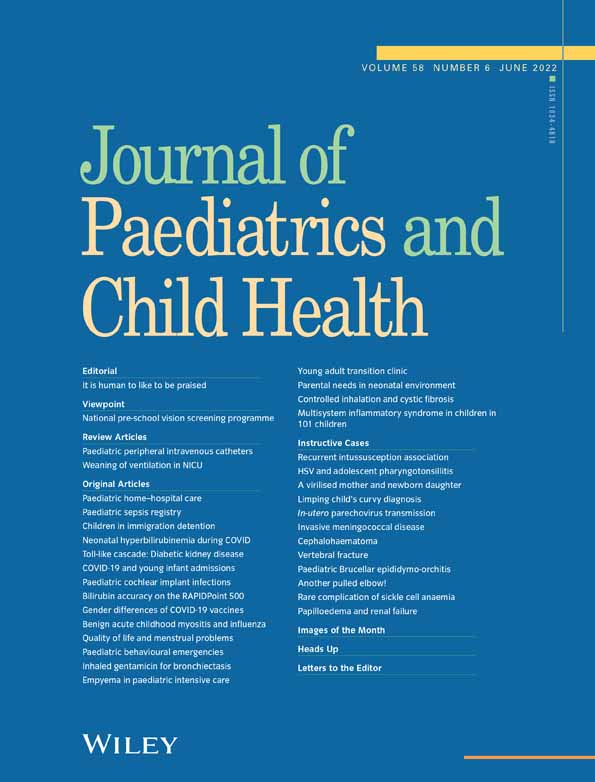Infectious complications and optimising infection prevention for children with cochlear implants
Conflict of interest: The authors have no conflicts of interest or sources of funding to declare.
Abstract
Aim
To describe the clinical epidemiology of children receiving cochlear implants, as well as the management and outcomes of cochlear implant infections and adherence to infection prevention measures.
Methods
A retrospective observational study was conducted in children ≤18 years who received cochlear implants in Western Australia's tertiary paediatric hospital. Information was obtained from medical and laboratory records regarding demographics, indication for implant, implant infection and preoperative Staphylococcus aureus screening/decolonisation. Immunisation history was examined using the Australian Immunisation Register.
Results
Overall, 118 children received cochlear implants, with 158 devices inserted (599 cochlear implant insertion-years). An implant infection rate of 3.8% (6/158) was identified during the study period (four pneumococcal and two community-acquired methicillin resistant S. aureus infections). All required surgical management, with an overall median duration of antibiotic therapy of 37 days (interquartile range (IQR) 29–48) and median length of stay of 8 days (IQR 8–9.5). All devices were retained and there were no relapses or deaths. Half of the children who developed cochlear implant infections (50%, 3/6) were up-to-date with additional pneumococcal vaccinations and no children (0%, 0/118) received S. aureus screening/decolonisation before implant insertion.
Conclusions
Favourable outcomes were achieved with cochlear implant retention; however, the treatment was burdensome for families. We demonstrate significant scope to improve adherence to existing infection prevention strategies and provide direction for optimising preventative measures in the future. These include ensuring parental education, additional pneumococcal vaccinations and S. aureus decolonisation which are delivered as an infection prevention bundle to the growing population of infants receiving cochlear implants.




